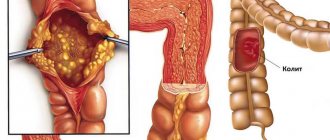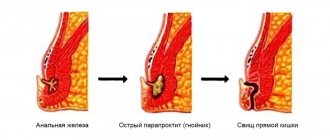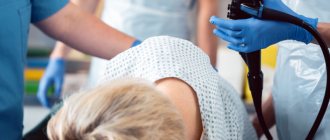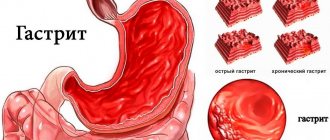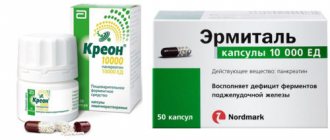Home » Treatment of anal fissure » Surgery to remove anal fissure
Book a consultation with a proctologist for the treatment of anal fissure for 3,500 rubles and receive a treatment prescription within 30 minutes for 1 appointment
Find out what day you need to make an appointment to get a consultation without a queue.
Experience 44 years 73 operations per month 876 operations per year 171 reviews Author of 73 scientific papers Has 9 patents 6,818 requests per month
Call
Surgery to excise anal fissure is considered the most effective way to prevent the development of the disease and complications. Conservative treatment is used only in the early stages of the pathology, when the size of the defects is small. In case of severe soft tissue injury, surgical intervention is performed, which relieves the patient of pain and other symptoms.
Anal fissure is a proctological disease, which is characterized by the formation of cracks in the rectum. Damage to the anus is accompanied by severe spasms, bleeding from the anus, and pain during bowel movements. After each bowel movement, the mucous membrane becomes irritated and an inflammatory process occurs. Surgical treatment of anal fissure will be the best option for the patient.
Types of anal fissures
The following types of disease are distinguished:
- acute stage;
- chronic stage;
An acute type of proctological pathology lasts up to a month. Initially, the patient does not notice the symptoms and is unaware of the development of the disease. Pain appears during bowel movements, and due to strong pushing, wounds and cracks form in the anus. After defecation, drip bleeding occurs, which brings discomfort to the patient. Every day the connective tissue grows and thickens. Lack of timely treatment leads to complications and can develop into a malignant neoplasm. Conservative treatment using medications is used.
Cracks become chronic if there is no treatment at the acute stage. Subcutaneous tubercles form in the sphincter. The scar tissue becomes coarser, the edges of the crack thicken and increase in size. Pain appears after each act of defecation, accompanied by heavy bleeding. Sometimes purulent and mucous discharge from the anus is diagnosed. Itching and burning appears in the affected area. Surgery for chronic anal fissure is necessary.
There is a classification of cracks by location. There are deep and superficial formations. Superficial cracks are located on the external soft tissues and are diagnosed during the initial examination. Treatment and rehabilitation will not be long. Deep fissures are located in the rectum; they cannot be detected during initial examination and palpation. Pathology is diagnosed exclusively through diagnostic studies.
In most cases, the defects are adjacent to the tailbone and affect the soft tissues that surround the anus. Rarely, anal fissures form on the anterior commissure. Paired lesions appear. Pathology has different etiologies and anatomical features.
Features of the event
The goal of surgeons is to renew the edges of the colon mucosa and remove sphincter spasm, which leads to bleeding in the wound area. Removing the spasm is a prerequisite for a good operation. The following types of surgical intervention are distinguished:
- The classic method is when the incision is made with a scalpel. Before this, local anesthesia is administered. The technique involves excision of the edges of the sphincter with subsequent elimination of granulomas. This should facilitate the passage of stool and also stop heavy bleeding. The ulcer will still bleed for 4-5 days, then it will slowly heal. Postoperative recovery lasts up to a week. During this period, the patient feels pain, but there is less blood and discomfort during bowel movements.
- Electrocoagulation. The essence of the method is electric current treatment and protein coagulation. The pulse is applied to the instrument, which cuts and simultaneously cauterizes the bleeding vessels. The operation lasts several minutes, and the rehabilitation period lasts only 2-3 days.
- A radiosurgical method that uses a radio wave knife operating at high frequencies. It has the following algorithm: a beam of waves is sent to pathological tissues, which affects the ulcer, the section of the mucous membrane is scarred. Rehabilitation goes well, since the procedure does not damage healthy tissue.
- Laser surgery – the anal fissure is excised by a laser beam. The procedure is painless and very fast, its price is higher than previous options - the cost is due to the use of expensive equipment.
The doctor decides which operation to excise the fissure is based on the following indicators:
- how much tissue is damaged;
- how long will the procedure last?
- if there is bleeding, surgery is contraindicated.
Reasons for appearance
Before surgical treatment of a fissure in the anus, the etiology of the pathology and the factors that influenced the deterioration of the patient’s condition should be determined. Gastrointestinal disorders can affect the formation of anal fissures. With constipation and diarrhea, intra-abdominal pressure in the anus increases, which irritates the mucous membrane. Chronic and acute diseases of the rectum become a predisposing factor. These include colitis, proctitis, Crohn's disease of the rectum, hemorrhoids at all stages.
The cause is also anal sex, the penetration of foreign bodies into the hole. A sedentary lifestyle or excessive physical activity and heavy lifting also lead to proctological diseases and the formation of hemorrhoids. You should pay attention to your diet. Excessive consumption of fatty foods and alcoholic beverages disrupts intestinal motility and slows down the metabolic process.
Anal fissures that do not heal for a long time are called ulcers, which lead to cancer. The affected area is considered a defect in the mucous membrane of the anal canal. In the absence of personal hygiene rules and unsanitary conditions, anal fissures form much more often.
Indications and contraindications
Indications
- chronic disease;
- ineffectiveness of conservative therapy;
- pain syndrome;
- scarring of the edges of the wound, narrowing of the anal canal as a result of prolonged spasm;
- development of complications (purulent paraproctitis, rectal fistula, anemia, etc.)
Contraindications
- infectious disease or inflammation in the rectal area;
- severe concomitant pathologies in the stage of decompensation;
- some blood diseases;
- massive bleeding in the intervention area;
- oncological process in the terminal stage.
Benefits of anal fissure surgery
Surgical treatment of anal fissures has a number of advantages that are important for the patient. The surgical intervention is performed by experienced surgeons from the private medical clinic “Proctologist 81”. Modern treatment methods and new equipment are used, which eliminate pathology even at the most advanced stages.
The patient is hospitalized in the morning, after which he goes home the next day. Rehabilitation takes place at home and does not require observation in a hospital setting. The risk of relapse or complications after surgery is reduced to zero.
Immediately before the operation, the patient is examined by an anesthesiologist and an individual anesthesia is selected. The procedure is painless and does not cause pain or discomfort. If aching pain appears after surgery, the anesthesiologist prescribes painkillers that will relieve the patient of discomfort.
Rehabilitation period
When performing an operation using Surgitron, the postoperative period is easier compared to traditional surgical excision of a fissure. Already on the second day, patients noted a decrease in pain and the need to take painkillers.
Sick leave due to loss of ability to work is required for 2-5 days, after which the person can return to work.
This type of operation is characterized by prolonged wound healing, about which the patient must be warned. Complete regeneration of the wound surface occurs 3-4 weeks after surgery, in some cases longer. During this period, discomfort may persist at the time of defecation.
In the postoperative period, the patient is recommended to follow a diet that promotes regular and easy bowel movements. It is also recommended to refrain from eating pungency and spices that have an irritating effect. It is recommended to reduce consumption:
- salty;
- fat;
- acute;
- a large number of seasonings;
- strong coffee;
- drinks containing alcohol.
Indications
Surgery to remove chronic anal fissure is performed for certain medical indications. Surgery is considered planned, but in critical cases emergency surgery is performed.
The indication is:
- ineffectiveness of conservative and drug treatment;
- cicatricial changes in the edges of the tissue;
- anal sphincter spasm;
- heavy bleeding from the anus.
If you experience pain during bowel movements, we recommend visiting a proctologist. The anal ring is formed by the circular muscle, so when pushing and moving, a spasm appears. Blood circulation is impaired, soft tissue regeneration slows down, pain intensifies every day. The connective tissue grows, scars, cracks and bleeding wounds with an open bottom are formed.
Treating a crack at home
To treat an acute anal fissure, hospitalization is not required, but you will still have to visit a proctologist. He will advise which drugs and remedies are suitable to eliminate discomfort, taking into account existing indications and contraindications. It is recommended to do this when there is a suspicion of an illness, that is, when the first symptoms of the disease appear - pain during bowel movements and itching, burning and the presence of blood in the stool.
The complex of therapeutic measures that can be implemented at home includes:
- anal hygiene;
- normalization of stool (constipation, as well as diarrhea, can additionally injure the mucous membrane);
- the use of external medications of complex action to eliminate pain, spasm and inflammation;
- the use of drugs orally to restore blood circulation in the rectum, antispasmodics and analgesics;
- with severe sphincter spasm and pain, pararectal blockade and divulsion may be required (this relieves sphincter spasm, reduces pain and improves blood supply to tissues);
- the use of folk remedies with anti-inflammatory and healing effects in the form of sitz baths.
If the above methods do not completely eliminate the disease within 3-5 weeks, surgery to excise the anal fissure may be required.
Preparation for the event
Surgery to remove anal fissure is considered a minimally invasive procedure. But the patient should follow preoperative preparations. Diagnostic tests are carried out to examine internal organs. Among them:
- fluorography or plain X-ray of the chest organs;
- electrocardiography;
- clinical blood tests - general, biochemical, assessment of coagulation, infectious status, as well as determination of blood group and Rh factor;
- colonoscopy - examination of the rectum is performed under anesthesia;
- consultation with a therapist;
- consultation with an anesthesiologist;
- consultations with specialized specialists in the presence of concomitant diseases.
If there are no contraindications, the patient is sent for magnetic resonance imaging or computed tomography. There are no contraindications for surgical intervention. However, in the presence of chronic disorders, the development of this symptom should be prevented and eliminated.
The proctologist informs the patient about bowel movements, if necessary. Each patient is individually informed about the preparation rules. Three days before removing the crack, you must avoid fatty, fried, salty and smoked foods. It is strictly forbidden to consume alcoholic beverages, legumes and foods that cause fermentation in the intestines. It is also advised to exclude fermented milk products, vegetables and fruits, berries, and sweets from the diet.
Before surgery, it is advisable to include carbohydrates in your diet. For example, honey and dark chocolate, which do not form indigestible fibers. On the day of surgery, you are allowed to drink only clean drinking water.
Excision of anal fissure
To remove an anal fissure, modern treatment methods are used, which minimize the rehabilitation period and provide the patient with comfort. Techniques such as laser and radio wave excision of anal fissure are widely used.
Before the operation, the proctologist consults the patient and prepares him for the procedure. An intravenous injection with a sedative is administered. Spinal anesthesia is used, which has no side effects and is easily tolerated by the human body.
Postoperative period
In recent years, thousands of operations have been performed using this technique. According to statistics, the intervention is easily tolerated. After surgery to remove anal fissures, there is no need to take painkillers and antispasmodics. A decrease in pain intensity and the absence of spasm is observed already during the first bowel movement after surgery. Loss of ability to work averages five days if the work is office-based. Final healing of the wound occurs in 25-30 days.
Patients recover quickly, the only problem that arises is the increased period of rehabilitation and healing of the wound itself. In a minimal number of patients (3-5% of those operated on), wounds heal slowly - up to three months after surgery. For several patients, rehabilitation took six months.
Laser excision
The method is considered the most gentle and effective. The surgeon relieves the spasm of the anal sphincter and, using special surgical mirrors, opens the anus. The crack becomes visible visually. Using a laser device, the damaged area is excised. The cut takes the shape of an ellipse. The light beam is concentrated, so the vessels in the affected area are immediately sealed. There is no risk of postoperative bleeding at all.
Laser radiation kills harmful bacteria and microorganisms that irritate the mucous membrane. A fresh wound heals quickly with the use of ointments and suppositories. The duration of the procedure is 15 – 20 minutes.
Anal fissure after surgery
Rehabilitation after excision of an anal fissure lasts on average 30 days. In the first days after the operation, it is advised to remain in bed. The wound is disinfected with antiseptic agents twice a day. The patient takes baths. When the soft tissues are regenerated, the patient leaves the hospital and returns to his normal lifestyle.
During rehabilitation, it is worth normalizing nutrition, including broths, cereals, dairy products, and whole grain bread in the diet. The stool will normalize, the spasm will disappear, the intestinal microflora will improve. Proctologists advise leading an active lifestyle, including daily walks in the fresh air and gymnastics in your daily routine.
Personal hygiene rules should be observed. Underwear should be made from natural materials, such as cotton, linen. Synthetic materials negatively affect wound healing and the condition of soft tissues.
Surgical methods
The main goal of surgery for anal fissure is to create conditions for successful self-healing of the wound defect. In chronic pathology, healing is hampered by rough edges and deposits (granulation) at the bottom of the wound. Therefore, the edges of the crack are excised and granulations are removed, transforming the old wound into a fresh one.
In 30% of cases this is enough to get rid of the disease. The use of laser surgery allows operations to be performed on an outpatient basis, without placing the patient in a hospital.
However, most patients develop persistent spasm of the internal sphincter, which impairs blood supply to injured tissues and prevents wound healing. Therefore, the classic method of surgery for anal fissure is a combination of excision of the fissure with sphincterotomy (partial dissection of the internal sphincter).
Why should you go to a proctology clinic?
The private proctology center “Proctologist 81” employs highly qualified proctologists, surgeons and therapists who will detect pathology even at an early stage and relieve the patient of pain in a short time. Both conservative and minimally invasive techniques are used for treatment. Modern low-traumatic techniques will quickly return the patient to their usual lifestyle.
Laparoscopic and endoscopic techniques are performed using small punctures. Radio wave bloodless surgery is also used. An individual treatment strategy and rehabilitation program are developed for each patient. Postoperative supervision of doctors who monitor the healing of the wound is guaranteed. Before discharge, a consultation is held with the attending physician and specialized clinic specialists.
A 24-hour hospital and an individual menu will make the rehabilitation period as comfortable as possible for the patient. If necessary, the ambulance service will deliver the patient from any city and region of the Russian Federation.
How is the procedure done?
Classic excision involves division into several stages. First, the patient is given anesthesia. In this case, it is recommended to conduct an allergy test to level out the likelihood of anaphylactic shock. Only after this is it possible to cut the anal sphincter so that feces can pass freely.
The same action will help in the future to quickly heal the open wound surface. But even the most experienced specialist cannot give an exact healing time at this stage.
Here it is worth taking into account the individual characteristics of the body, as well as its accuracy when carrying out all postoperative appointments. After the first stage, the surgeon must excise the edges of the crack to remove granulations at its bottom. The wound remains open. Healing, which includes scarring, usually lasts about a week. All this time, the operated patient will be plagued by pain, which is a natural response of the body.
Some patients, having learned how long such an open wound surface takes to heal, prefer to look for alternative excision formats with a shortened rehabilitation period. It is believed that modern techniques such as electrocoagulation may provide improved results.
The method is based on tissue cauterization, rather than classic excision of the affected area. For this purpose, high temperatures are used, allowing one to literally “seal” the dissected vessels in order to reduce the volume of hemorrhage. Here, a healed scar will cause fewer problems than when using a scalpel.
Electroradiosurgical coagulation and laser surgery work on a slightly similar principle. But, despite some advantages of innovative approaches, they are inferior to traditional excision in a number of aspects. Relapse is a common occurrence in this situation. Also, many visitors to the proctology office are not satisfied with the established price list for innovative treatment methods.
Anal fissure surgery price
The cost of surgical treatment depends on the patient’s diagnosis and the stage of the pathology. We recommend that you familiarize yourself with the prices for surgical intervention on the official website of the proctology clinic. Leave a request, and the administrator of the medical institution will call you back to schedule you at a convenient time.
To ensure that the treatment is effective and the rehabilitation does not last long, contact a medical specialist after the first manifestation of the disease. With timely treatment, the development of pathology will be stopped. Conservative treatment will give immediate results and relieve constant pain.
Proctologists
Bagdasaryan Lev Karapetovich Surgeon - coloproctologist, candidate of medical sciences, doctor of the highest category, member of the Association of Coloproctologists of Russia.
Cost of admission 3500
₽
Make an appointment
Bagdasaryan Samvel Lvovich Surgeon - coloproctologist, candidate of medical sciences, member of the Association of Coloproctologists of Russia.
Cost of admission 2900
₽
Make an appointment

